Discovering the Shape of Chicago: An Upper School Journey in Project-Based Learning
First Trimester at Bennett Day Upper School came to an incredible conclusion with the students’ very first Demo Night, demonstrating all of their project-based learning (PBL) around “The Shape of Chicago.”
Studies show that the endless cross-curricular possibilities of high-quality project-based learning encourage higher student engagement, achievement, and retention of knowledge. We found this statement to be profoundly true as we watched Upper Schoolers deeply engage in researching our city’s history, architecture, environment, government policies, and neighborhood gentrification.
Bennett Day Upper School students spend half of each school day engaged in a project-based learning course, the theme of which rotates on a trimester basis. The model is based on the Buck Institute for Education’s “High Quality PBL Framework.” You can read all about the framework on their site, which is located here.
Each trimester, our project-based learning course moves through five different phases. Here’s how our Chicago unit took shape across each stage:

Phase One: Provocation
During this phase, the goal is to expose students to our thematic topic from as many different angles as possible, to spark curiosity. This might include things like taking field trips, viewing documentaries, visiting with expert speakers, seeing live productions, analyzing artwork, and so much more. Students are asked to use their five senses to deeply notice and note their surroundings, as they will later use those observations for further investigation.
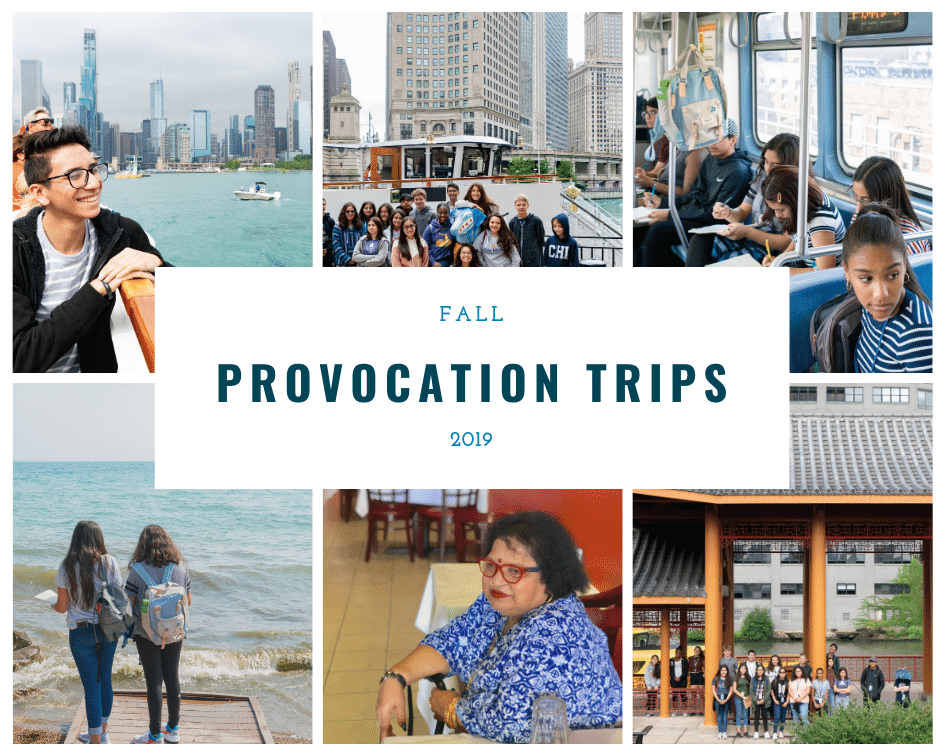
During our “Shape of Chicago” unit, students visited as many corners of the city as possible in the span of a few school days. In true Chicago fashion, we took the CTA trains and buses to every location, allowing students to get to know our renowned transit system.
We began with an exciting architectural tour by boat of the Chicago River and Lake Michigan, exposing the students to the layout of the city and some of its most famous buildings and feats of engineering.
Then we visited the Humboldt Park neighborhood to tour its famous park, built by Alexander Von Humboldt in the 1870s. Students observed the cultural and environmental importance of the area.
Our group then visited Chicago’s Far North Side, stopping first at Hartigan Beach to take in the sights on the shore of Lake Michigan. We then headed to Devon Avenue to experience the finest Indian food this city has to offer at Hema’s Kitchen. Many students had never travelled this far north and were unaware of the cultural treasures awaiting them in Rogers Park. We ended the day with a tour of Graceland Cemetery to visit and learn about some of Chicago’s most legendary residents.
We ended our city tours with a visit to Chinatown, the nation’s fastest-growing neighborhood of its kind, where we took in the beautiful sites at Ping Tom Memorial Park and had Dim Sum at Cai Restaurant.
In between site visits, students also read and watched segments of PBS’ “Chicago: City of the Century” series to learn more about our city’s journey from marshland to the “Second City.”
Phase Two: Question Storming
Once the students had observed the city through multiple modalities, we asked them to use their provocation notes to formulate as many questions as they possibly could. Students are asked in every PBL to consider both quantitative and qualitative types of questions: quantitative having more to do with statistics and facts, while qualitative questions consider more nuanced and perhaps, opinionated questions. Students also aimed to ask questions across the STEAM spectrum (science, technology, engineering, arts, mathematics).

After categorizing their questions into large umbrella topics, the students identified history, architecture, environment, government policy, and neighborhood gentrification as topics they would like to further research in small groups.
Phase Three: Preparation & Research
After students identified what topics they were most interested in researching, we broke into small groups to frame our key driving questions around those topics. Teachers then developed guided lessons around student-generated questions and skill-based instruction on the research process.
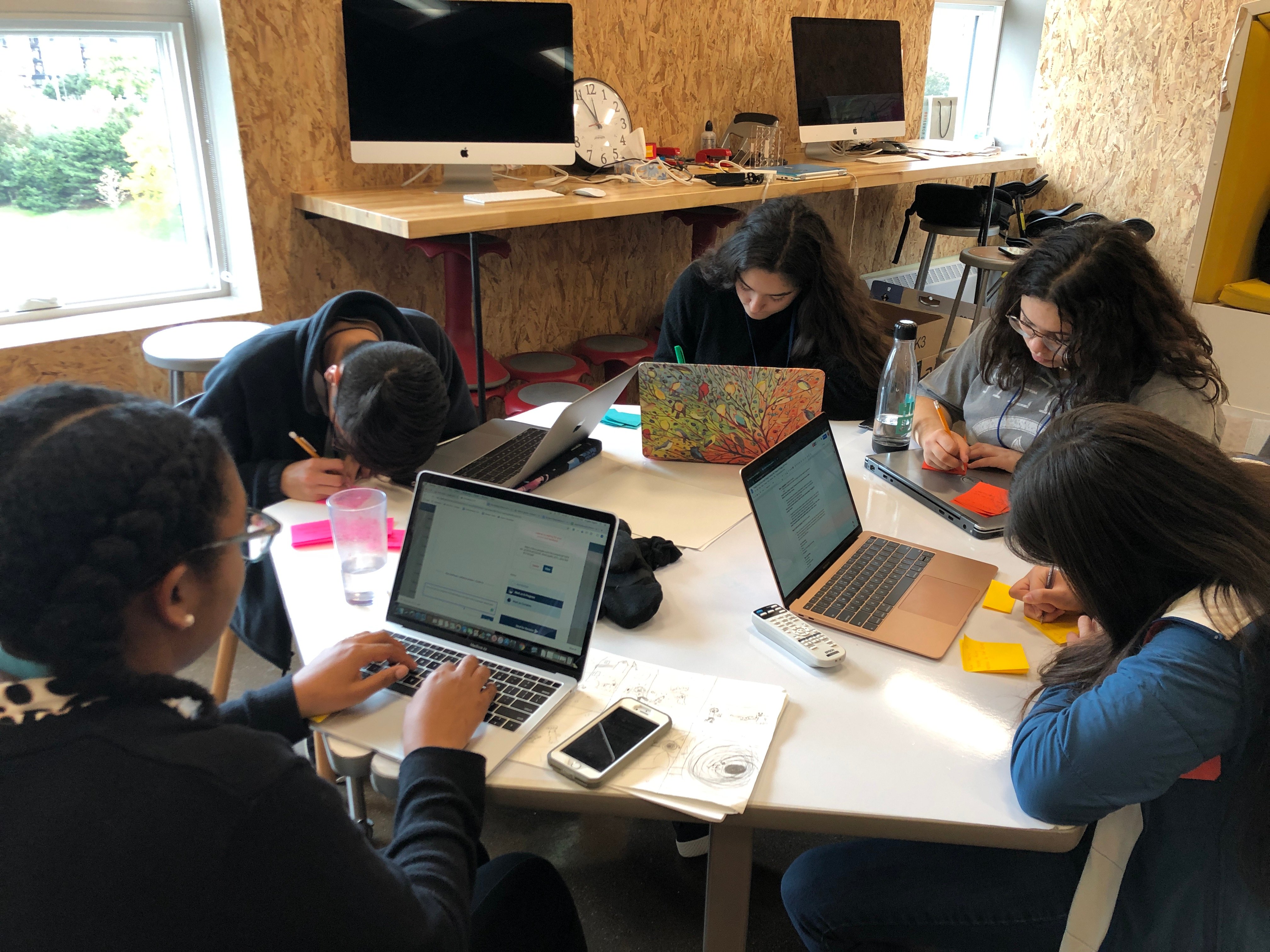
Because “The Shape of Chicago” was our First Trimeter unit of freshman year, foundational research skills made up the bulk of our teacher-directed instruction. We worked with students on search engine skills, finding reliable resources for content, note-taking, citing sources, creating annotated bibliographies, and summarizing research.
Many students also engaged in interviews with topic experts and had to learn how to independently solicit and arrange said interviews, while also generating deep questions for their subjects.
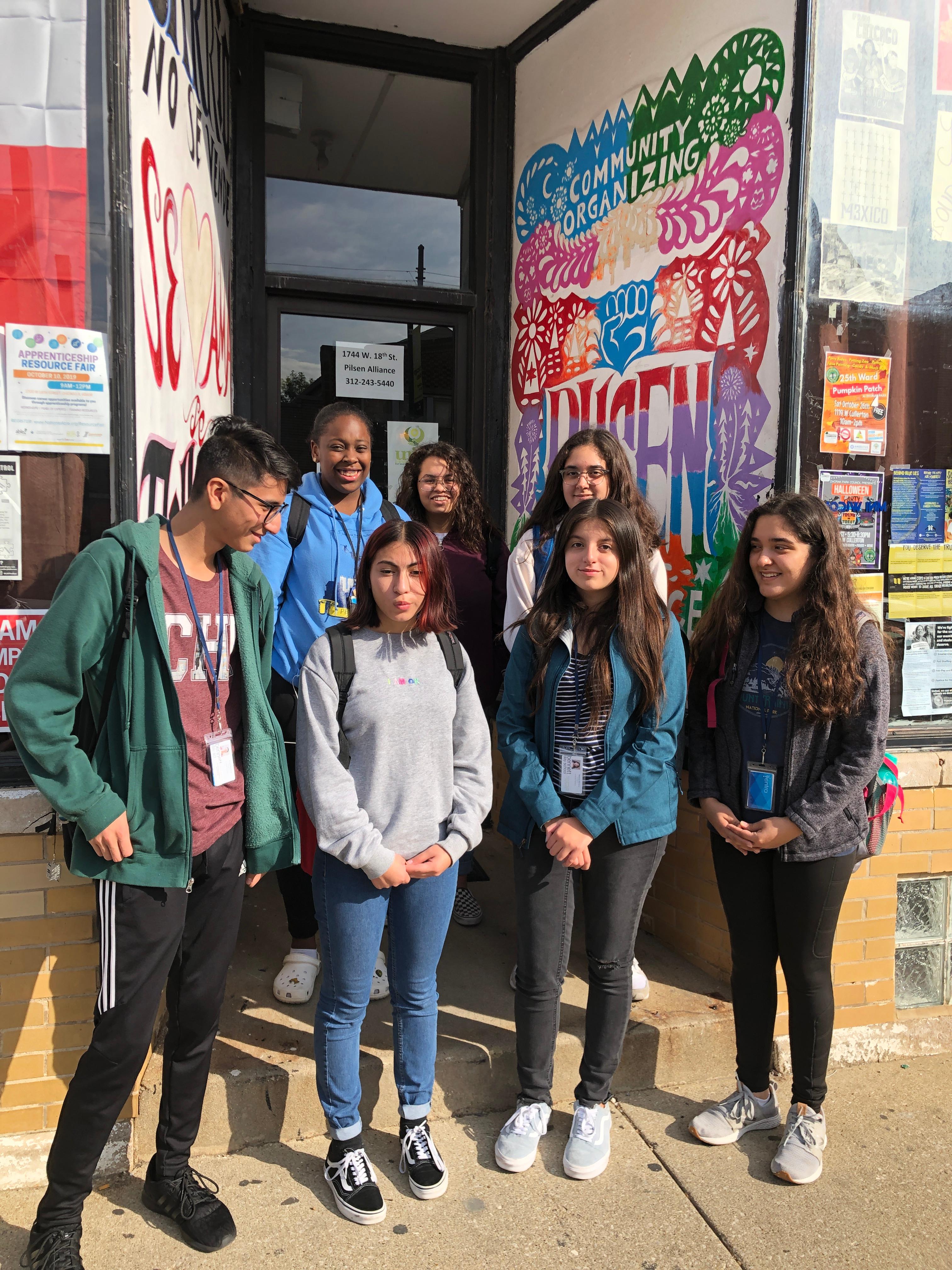
For instance, the gentrification and government policy groups interviewed the Puerto Rican Cultural Center, The Pilsen Alliance, and Alderman Walter Burnett Jr. about their stances on various social services offered by the city and the impacts of gentrification on Chicago neighborhoods. One small group arranged a further field trip to tour more architecture downtown, while others visited Shedd Aquarium or The Chicago History Museum. All of the students’ research and experiences helped them to craft individualized thesis statements and research summaries regarding their group’s initial driving question(s).
Phase Four: Project Design
 During this phase of PBL, students are then asked to take what they have learned and demonstrate it in a tangible way to educate an authentic audience. This can take many different forms—activism, building, crafting, writing, painting, audio/video work, and so much more. They are asked to collaboratively design with their group members for at least part of their demonstration.
During this phase of PBL, students are then asked to take what they have learned and demonstrate it in a tangible way to educate an authentic audience. This can take many different forms—activism, building, crafting, writing, painting, audio/video work, and so much more. They are asked to collaboratively design with their group members for at least part of their demonstration.
For “The Shape of Chicago,” each group was given a specific design challenge around their research to contribute to one scaled map table (constructed from scratch) representing the City of Chicago:
Environment Group: A moving water feature (with real water) with symbolic representation of pollution and invasive species in The Chicago River.
History of Chicago Group: Movement of the Great Chicago Fire through the use of LEDs. Had to show the actual path of the fire.
Architecture Group: 3D models of famous Chicago architecture scaled to each other (scaled to the map would have been too small for visitors to see). Each building model had to represent a different architectural style.
Government Policy Group: Pop-up features that offer statistics of services offered and needed in specific areas of the city. Had to have a visual with a caption and be placed in a symbolic location.
Gentrification Group: Compared changes in neighborhood demographics between today and 1980 between the boundaries of Diversey to 26th street and Halsted to Pulaski. Represented the change in racial majority in those two time periods.
In future PBLs, rather than teachers guiding design challenges, student groups will create these for themselves.
Each group then went through the design-thinking process of empathizing with their audience, defining the task and potential problems, ideating, prototyping their best ideas, and finally testing and refining their products. Students learned invaluable lessons about group collaboration, communication, and keeping a growth mindset to push through challenging iterations.

(See even more project design moments in the video at the top of the blog!)
Phase Five: Demonstration & Reflection
Each trimester culminates in a public demonstration of student work called “Demo Night,” in which parents, members of the community, and other project-relevant guests are invited to learn from Upper Schoolers.
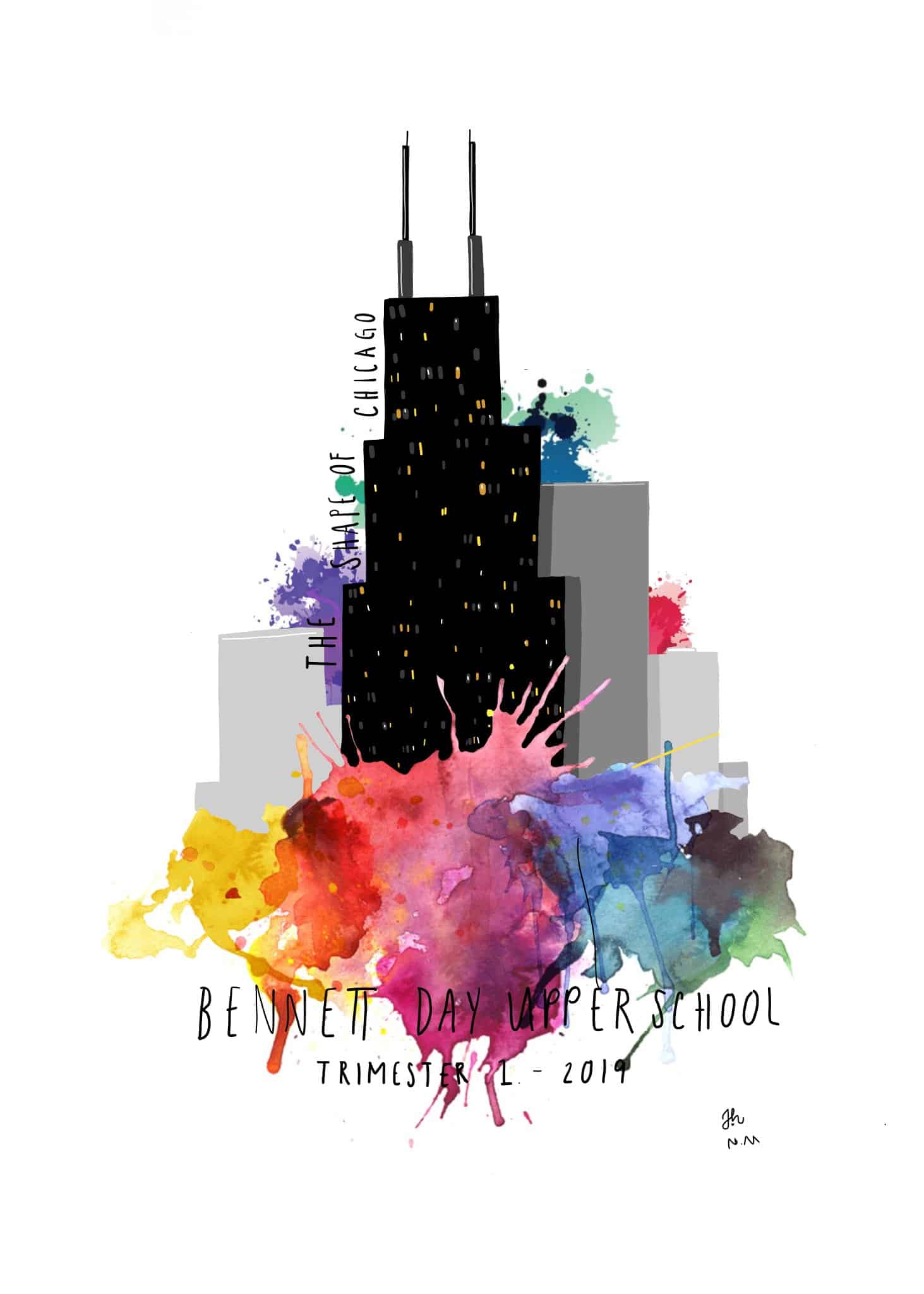
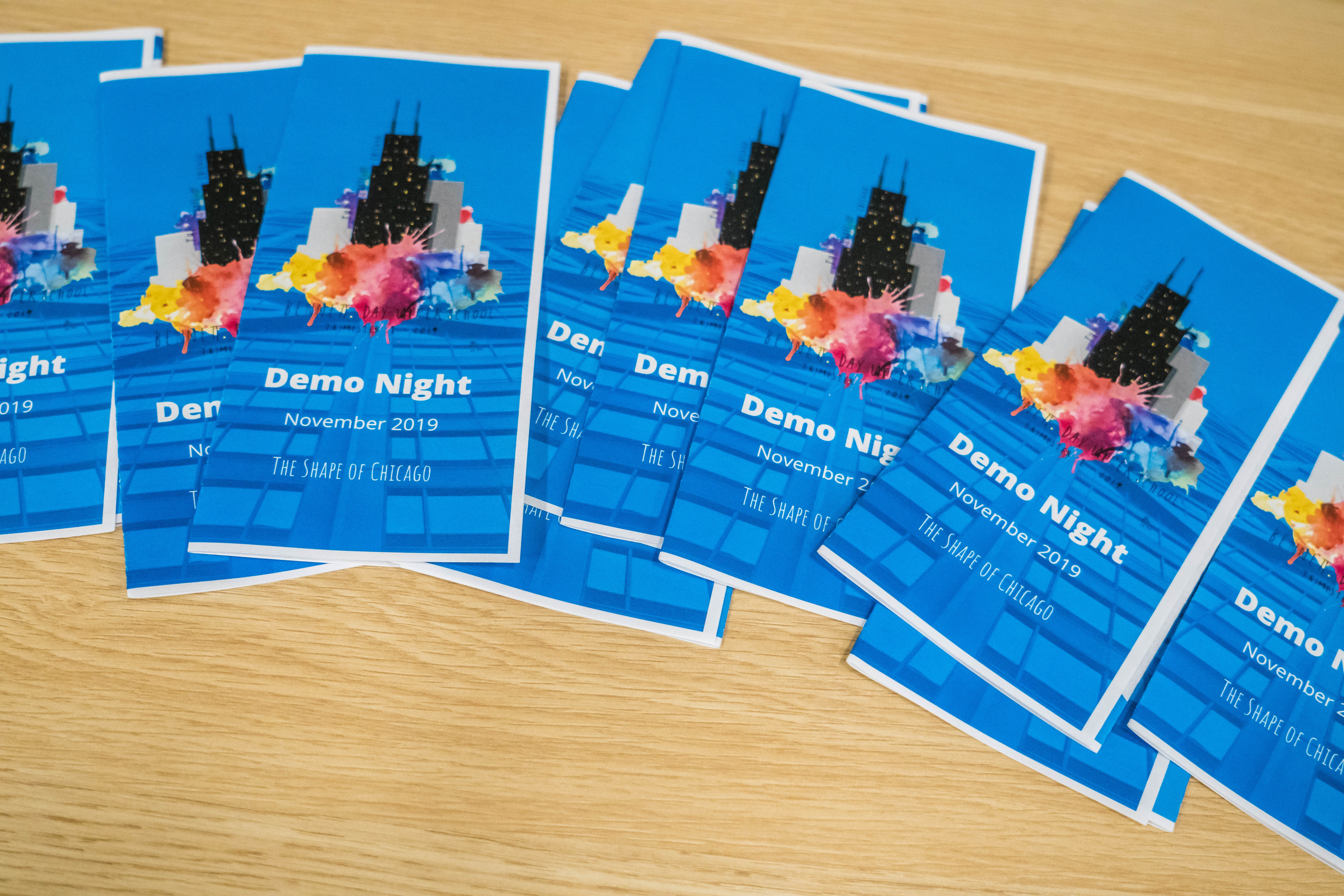
Students take ownership over every aspect of Demo Night planning and execution, including but not limited to: logo and program design, introductory speeches, event coordination and operations planning, room setup, food orders and deliveries, technology assistance and setup, music and visuals, seminar exhibit planning, and so much more. They spend the evening educating attendees about their work and its importance.
Students wrote speeches and proudly presented (in both English and Spanish) the process and findings of each group’s research.
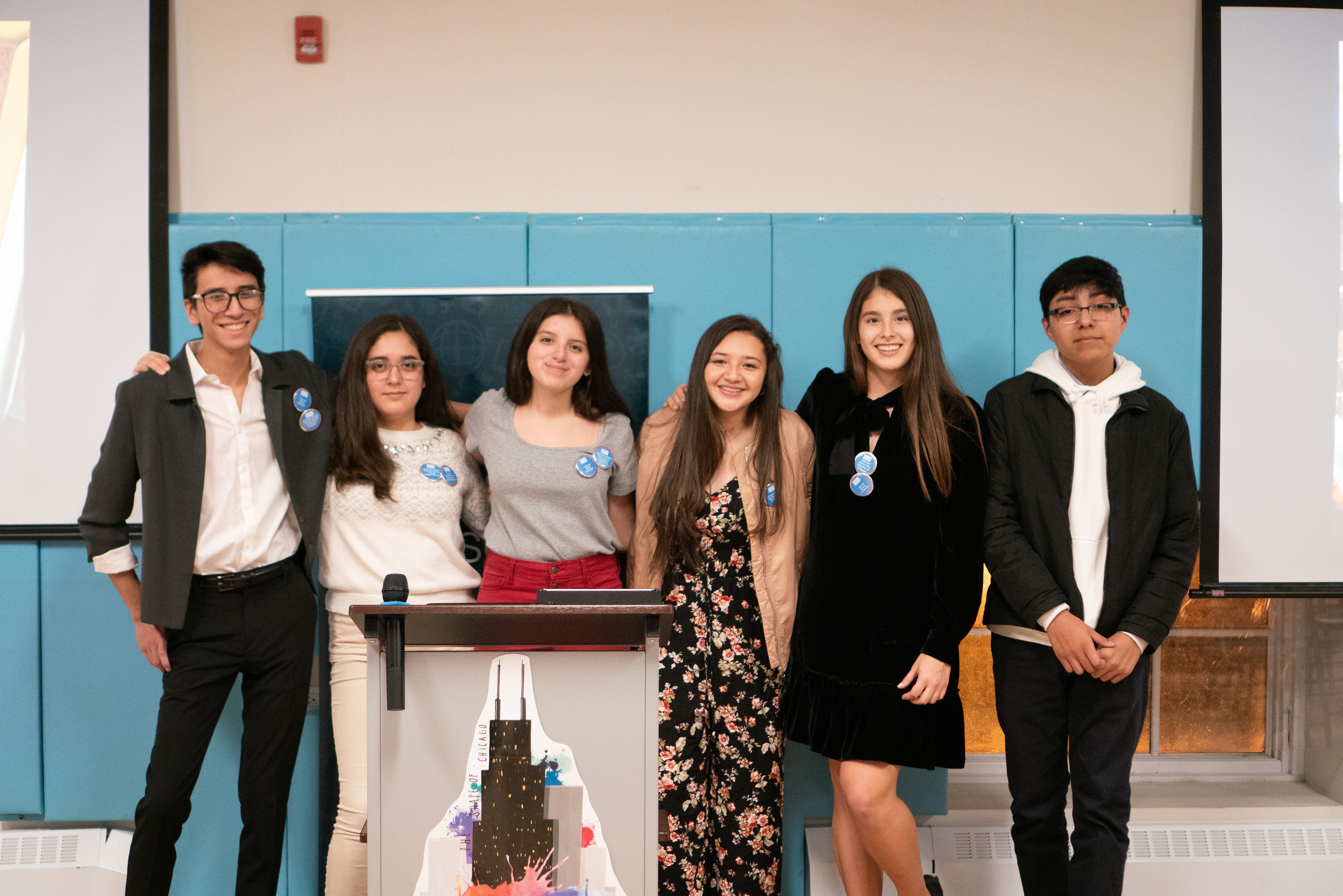
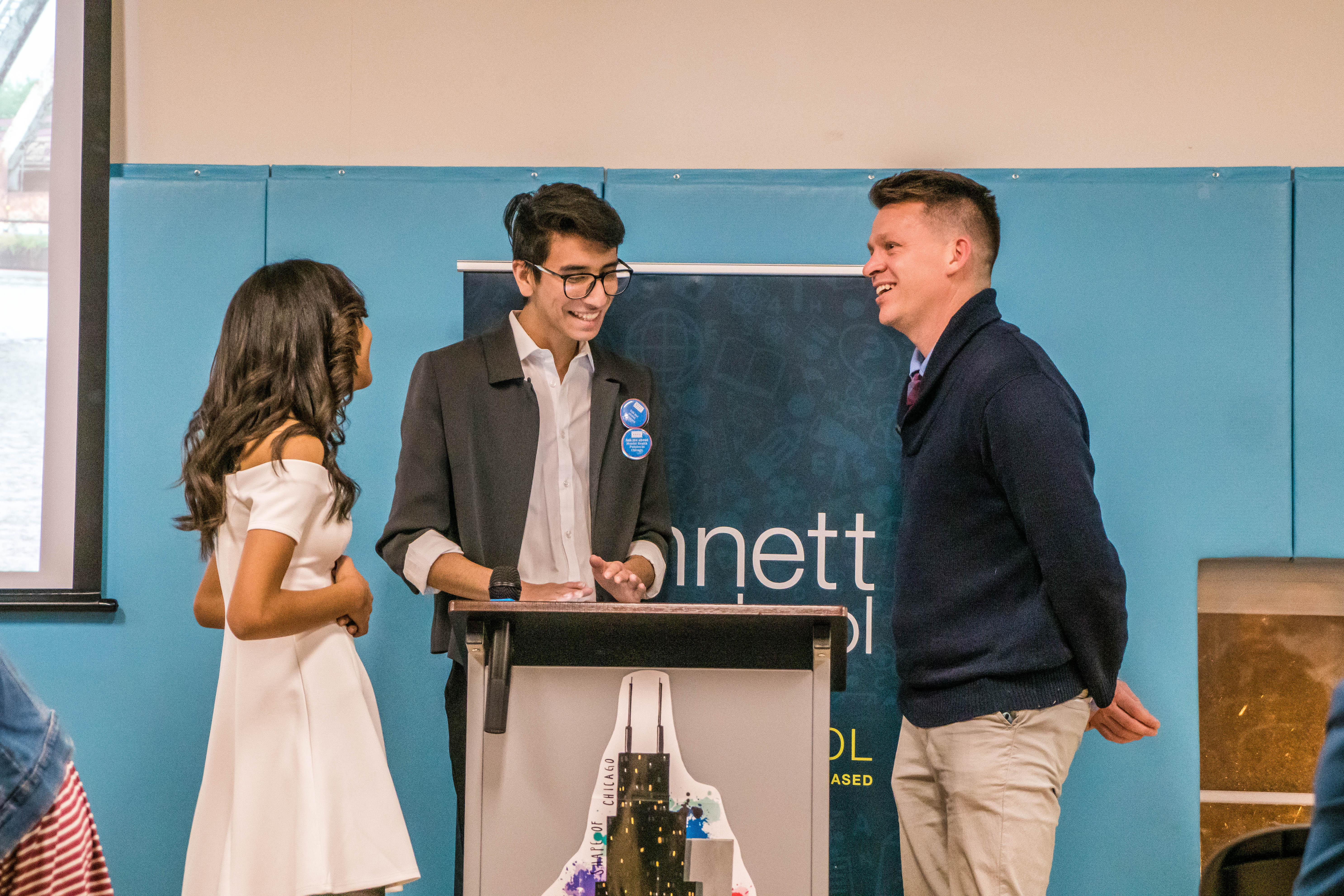
Visitors were then invited into our Design Lab to view our “Shape of Chicago” scaled map table and interact with all of the group contributions. Students circulated the room to answer questions about their topics of expertise and showed guests how to engage with the exhibit. Representatives from each group were also stationed at tables to show guests the specific planning and research that went into their small group projects. Students were also proud to show their group’s “fails”—the ways in which they had to reiterate their project plans when something didn’t work out and what they learned in the process.


Following all Demo Nights, students end the trimester by deeply reflecting upon their growth throughout the prior 12 weeks. In their final Presentations of Learning (POLs), students deliver a filmed presentation to classmates and teachers describing the highs and lows of their learning journeys and what they have learned about themselves as individuals and collaborators.
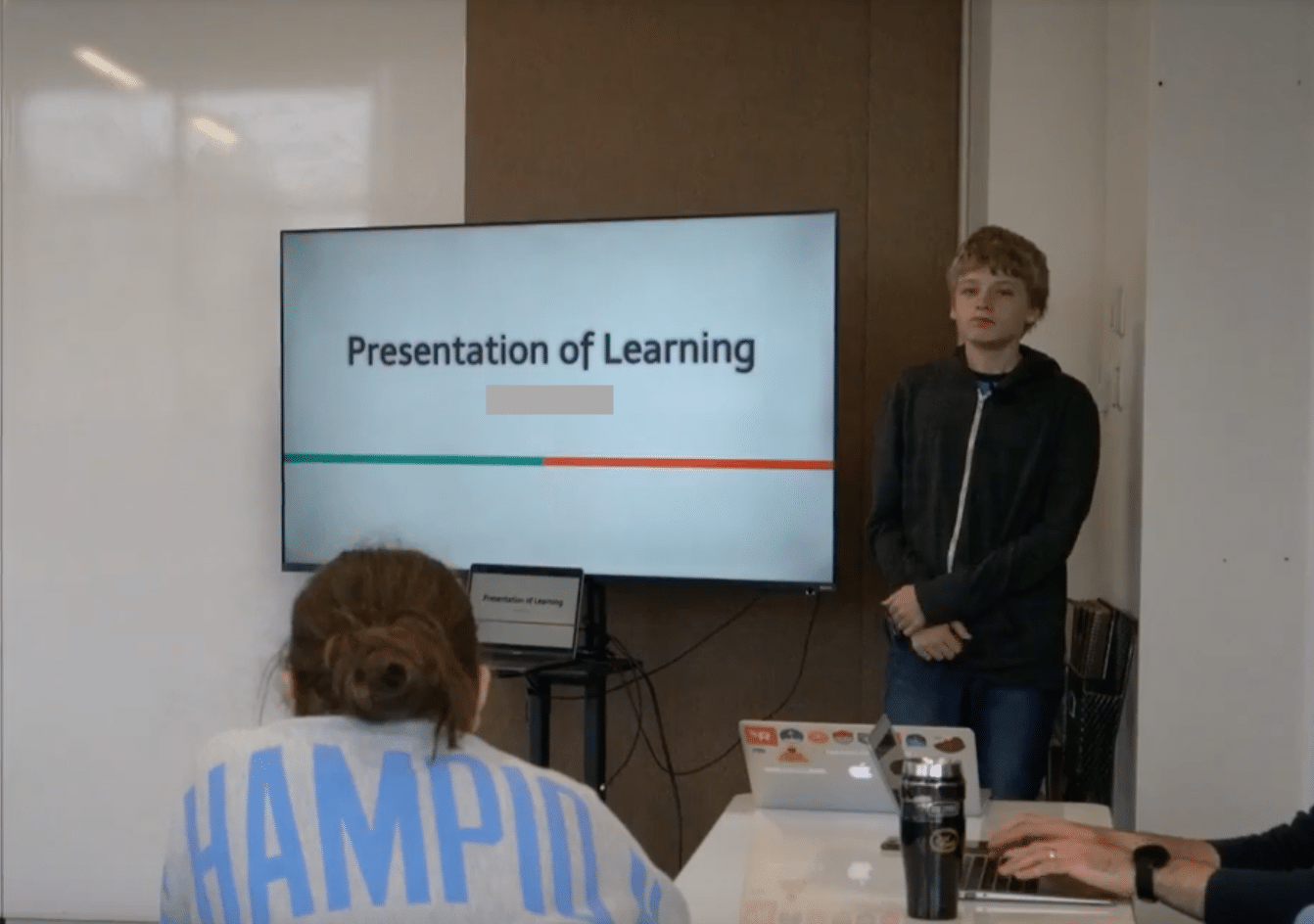
Future POLs will also invite parents to join the audience and ask questions. These presentations then help students and their advisors to set academic and personal goals for the coming trimester.
Upper Schoolers learned so much from their Trimester One journeys and can’t wait for Demo Nights to come!